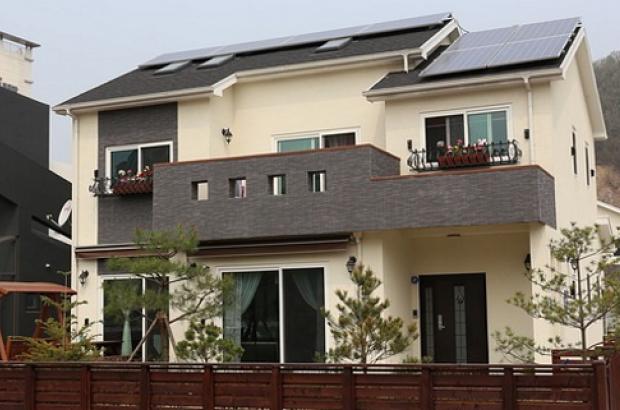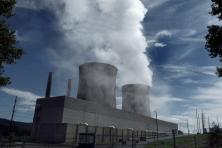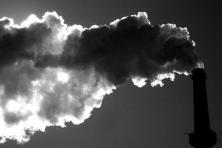State and local leaders have advised everyone to “stay home, stay healthy” these past several months as we cope with this global pandemic, leading many of us to spend a lot of time inside buildings. But are our current homes and buildings up to the task of providing a comfortable, affordable, clean and climate-friendly environment for us and our families? And as Oregon lays plans for how to recover economically from the COVID fall-out and get people back to work, will the new homes and buildings we construct reflect the climate crisis, the health crisis and the affordability crisis head-on?
Currently, many of the buildings in which we live and work waste energy, generate excessive pollution, and harm our health. Our existing buildings can use energy more efficiently, saving on utility bills and avoiding costly repairs. We must ensure new buildings are super energy-efficient, powered by clean electricity instead of fossil fuels, and built by a local workforce with good-paying, permanent jobs. As investments and incentives for clean homes and commercial buildings are developed, they should be prioritized for communities most impacted by climate change, energy burden, and housing instability—low-income, Black, Indigenous, and communities of color.
The wide-reaching climate Executive Order signed by Oregon Governor Kate Brown in March 2020 (the Oregon Climate Action Plan or “OCAP” for short) helps set a better trajectory for new buildings constructed in coming years. The building code changes and appliance efficiency upgrades required in OCAP will provide huge annual savings to consumers and help our state reduce climate pollution by millions of tons per year.
Oregon is still in the midst of a deadly pandemic and a major economic downturn. Our state is also grappling with an unmitigated climate crisis and the pervasive effects of institutional racism. While it might seem daunting to face so many simultaneous threats to our lives and livelihoods, there are real solutions at hand. We can rebuild and recover in a more just, clean, healthy, and smart way—while creating lots of high quality green jobs along the way. One of those climate-smart and equitable solutions to build back better than before is right in front of us, and all around us: our homes and other buildings.
In this article:
- Today’s buildings pollute and contribute to the climate crisis
- Clean Buildings are a key climate solution
- How OCAP is helping Oregon build back better
- More work ahead
- Footnotes
 Today’s buildings pollute and contribute to the climate crisis
Today’s buildings pollute and contribute to the climate crisis
Homes and commercial buildings need a lot of power. They consume nearly 43 percent of all the energy in Oregon1 and cause about one-third of our state’s climate pollution—the second-largest source of climate pollution after the transportation sector. And those numbers are expected to increase in the coming years, as our state’s cities and towns continue to grow. Projections for Oregon estimate that more than 700,000 new houses and apartments will be built in Oregon by 2050, and an estimated 800 million square feet of new commercial building space (about the size of 4,444 Walmart SuperCenters)!
Homes and commercial buildings produce about
one-third of our state’s climate pollution.
And this trend spans the entire state—Bend, Oregon is the third-fastest growing city in the entire country. Buildings also account for an increasing amount of so-called “natural gas” use (a harmful fossil fuel more aptly called fossil gas), both in the form of electricity generated from gas power plants and gas pipelines directly fueling gas appliances like furnaces and stoves.
In addition to climate impacts, wasting energy and using fossil gas appliances in buildings also has negative health and equity impacts. Due to historically racist housing and economic policies, disproportionately high numbers of low-income, Black, and Indigenous families live in homes with inadequate conditions that are unhealthy and uncomfortable. Low-income households also must spend a larger portion of their monthly income on electricity, gas, and heating. The average American household spends about 3.5% of their income on utilities; this spikes upwards of 10% for low-income households. Adding insult to injury, low-income households have the least access to energy-efficient appliances or other clean energy technologies.
Another consequence of racist public policies is toxic air pollution being disproportionately spewed in low-income, Black, and Indigenous communities. In turn, many of the chronic diseases exacerbated by inadequate housing conditions and indoor air pollution occur at higher rates among low-income, Black, and Indigenous families. For example, Black children suffer from asthma at about double the rate of white children. Further compounding these health disparities, a recent report issued by the Rocky Mountain Institute revealed that cooking on gas stoves and cooktops spews toxics that spike indoor air pollutants above levels that would violate outdoor air pollution standards and exacerbates respiratory conditions like asthma and chronic obstructive pulmonary disease (COPD).
Historically, Oregon has prided itself on being a national leader in energy efficiency in buildings. But over the past decade, Oregon’s energy efficiency building codes have fallen behind Washington and California. The Oregon Climate Action Plan will catch Oregon up to our West Coast neighbors for new building standards. Unlike many states, Oregon has a one-size-fits-all statewide building code; local jurisdictions are not currently allowed to enact stronger energy efficiency requirements through building codes for their communities. Local jurisdictions can try to pursue an exception from the state, but it is a complex and uncertain process that deters local jurisdictions. This makes it more difficult to pass ambitious energy efficiency requirements because all communities from Burns to Beaverton have to adhere to the same set of inflexible standards.
 Clean Buildings are a key climate solution
Clean Buildings are a key climate solution
Homes, apartments, and commercial buildings constructed today will last for generations, locking in their impacts on our health, climate, and energy bills. Our building standards must reflect the climate emergency. We must build significantly cleaner, better-performing, fossil-free homes and buildings now or the pollution and energy waste will be locked in for generations (or require costly retrofits to undo later on).

 Clean Buildings are healthy buildings
Clean Buildings are healthy buildings
Indoor air quality, air flow, and comfortable temperatures are better for health and productivity. Having no gas-burning appliances cuts down on pollution inside the home or building. Clean Buildings also keep air pollution, pollen, and noise out because of better insulation and sturdier windows. These benefits result in less sick days and reduced medical expenses.

 Clean Buildings save Oregonians money
Clean Buildings save Oregonians money
Oregon state agencies estimate that energy efficiency improvements such as improved heating, cooling, and weatherization in homes can save $113 million per year in utility costs for low-income households. This is money that could be spent on other needs, such as medicine and school supplies. It is also much more cost effective to build energy efficient and clean buildings from the start than to retrofit existing buildings and try to recoup these savings and benefits later.

 Clean Buildings create good jobs
Clean Buildings create good jobs
Energy efficiency will be a job recovery engine as we work to get our state’s economy back on track from the COVID-19 pandemic. Investing in Clean Buildings creates good-paying local jobs in construction, electrical, manufacturing, design, engineering, sales, and more. Before the pandemic, more than 42,000 Oregonians worked in energy efficiency jobs, with 70 percent of employers being small businesses with 11 employees or fewer.

 Clean Appliances are important too
Clean Appliances are important too
From an energy and climate perspective, almost as important as the building itself are the appliances you put in them. Appliances sold in Washington and California currently waste a lot less energy than the ones currently sold to Oregonians. Energy-efficient electric appliances save us energy and water, putting money back into the pockets of Oregonians over time, and cutting health- and climate-harming pollution.
 How OCAP is helping Oregon build back better
How OCAP is helping Oregon build back better
The Oregon Climate Action Plan (OCAP) directs the Oregon Building Codes Division (BCD) and the Oregon Department of Energy (ODOE) to maximize energy efficiency in our new buildings and appliances. As a result, OCAP has the potential to significantly reduce climate pollution from Oregon’s buildings sector, improve the health of the people who live and work in these buildings and homes, and save Oregonians hundreds of millions of dollars in energy costs over the next three decades.
OCAP establishes a longer term goal of achieving “zero energy ready” residential and commercial building codes by 2030, defined as a 60 percent reduction in building annual site consumption of energy.2 This means our building codes are maximizing energy efficiency in every new home and building being constructed in the coming building boom, locking in savings and reducing pollution.
OCAP will also ensure state appliance standards for things like lighting, dishwashers and computers are updated to maximize energy efficiency. These new standards will help Oregon catch up with the stronger standards enacted by other West Coast states. Updating appliance efficiency standards, as required by OCAP, can save Oregonians an estimated $35 million per year by 2025 and over $100 million a year by 2035, while significantly reducing climate pollution (the equivalent of preventing 15 million gallons of gasoline from being burned each year by 2035).
OCAP also directs the Public Utility Commission (PUC) to address and mitigate unequal energy burdens borne by low-income households, especially in communities of color and other vulnerable populations. The PUC must also propose ways to mitigate other affordability and environmental justice inequities, including through utility rate design and other programs to alleviate energy burden. This could include low-income weatherization and energy efficiency programs to ensure people’s homes are healthier and more affordable.
 More work ahead
More work ahead
The Oregon Climate Action Plan is a leap forward for our state’s future of cleaner, healthier, better-constructed buildings—but more work remains, especially to reduce energy use and fossil gas use in existing homes and buildings. Increasing energy efficiency and shifting to the use of clean electricity in homes and other buildings are the two most effective ways to reduce fossil gas use in our built environment. Ensuring affordable housing is built along public transit corridors and in walkable neighborhoods is another key solution. Building codes should also ensure people can easily add solar panels and electric vehicle infrastructure, as well as build all-electric buildings that are clean and healthy today and for generations to come.
As these policies are developed and implemented, there needs to be a focus on prioritizing the needs and creating benefits for low income and communities of color. When there are resources available to make buildings and homes waste less energy, create less pollution, and save on bills, we must ensure the investments benefit those who need it most due to decades of being unfairly and purposefully left out. That's how we can build back better and achieve a just and equitable transition to our clean energy future.
 Footnotes
Footnotes
1 "Biennial Energy Report Chapter 1." Oregon Department of Energy. pp. 38
2 The Oregon Climate Action Plan (OCAP) builds on the Governor’s earlier Executive Order, EO 17-20, which directed BCD to increase the energy efficiency of homes and buildings by roughly 20 percent over six years (2017-2022). EO 17-20 also directed BCD to update codes by 2023 to require that new buildings be electric vehicle charging ready (with conduit for driveway or garage charging) and rooftop solar ready (with conduit to roofing). BCD is planning to update those code provisions by the end of 2020 or early in 2021.




